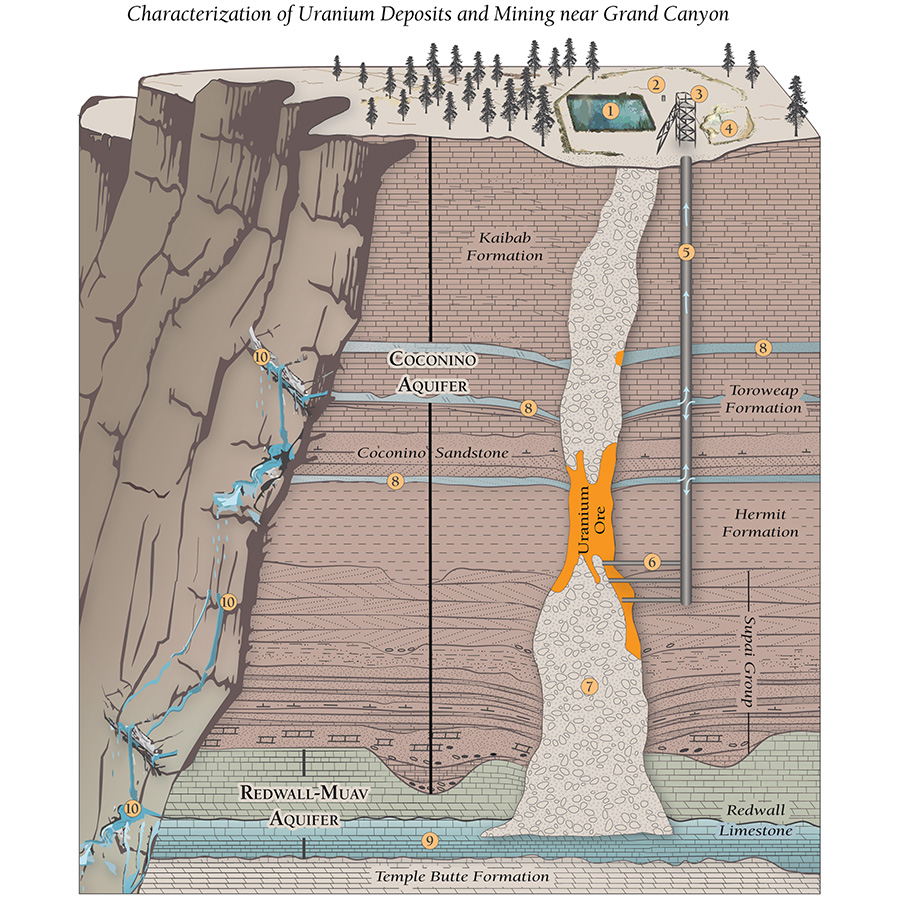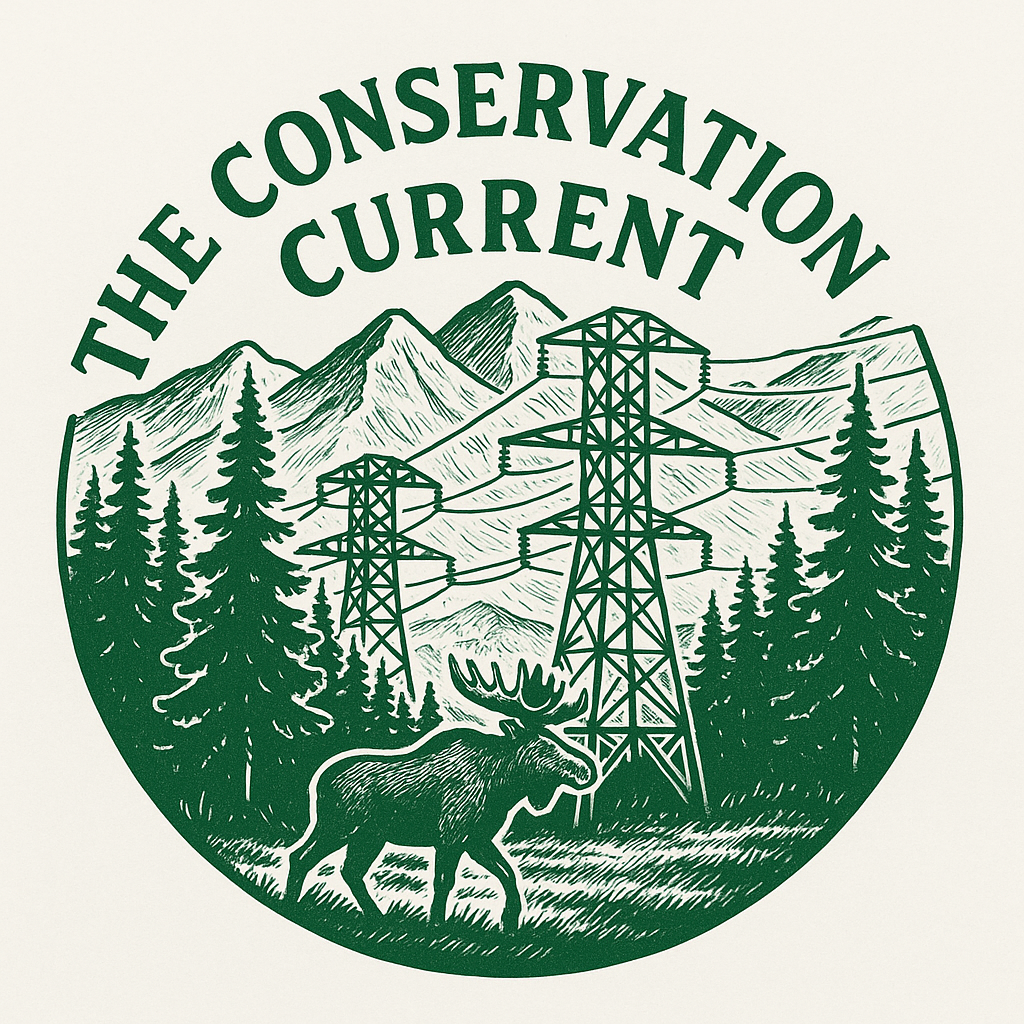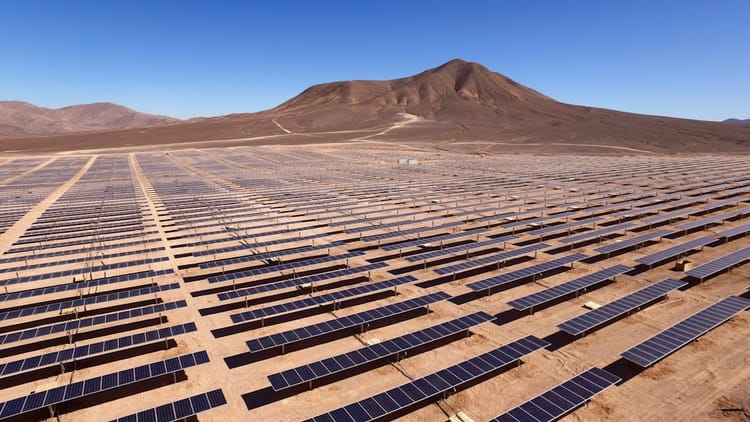What would happen on public lands if 25% of our grid ran on nuclear?

The Big Idea
Picture the lights across the country on a Monday night. Football on TVs. Dishwashers humming. Data centers inhale electrons like whales. Now imagine one in every four of those electrons coming from split atoms.
That is not science fiction. It is a policy choice. The question is simple and uncomfortable: What happens to our public lands if we make that choice?
The New Center of Gravity
The beauty of nuclear is density. A single plant can power a region inside a relatively tidy fence line instead of sprawling across miles of sagebrush. If we reused old coal plant sites, we could avoid clearing new ground and keep the plant-side impact compact and familiar, not on public land.
Small Modular Reactors (SMRs) are compact nuclear units, typically 50–300 megawatts, designed to be built in factories and installed on existing industrial sites like private retired coal plants. Utilities can add modules over time, stacking capacity without sprawling onto new ground. That flexibility can reduce the need for new plant footprints on public land.
But there is a catch. The real land story for nuclear is upstream. It is the rock.
To run a quarter of the grid on nuclear each year, the United States would need fifty to sixty-five million pounds of yellowcake, the uranium oxide that starts the fuel journey. Today, we produce a rounding-error fraction of that at home (less than 700,000 pounds in 2024). Most of our fuel comes from abroad. If we decide to “make our own,” the front end of the fuel cycle comes back to the West and back to public lands.
Where The Rock Lives
Start with a map of Wyoming. Now, shade 70% of the whole state. The Bureau of Land Management oversees roughly forty-three million acres of subsurface rights there. Under those acres sit sandstones laced with uranium. Companies mine them through a method called in-situ recovery. You drill wells, pumping a chemical solution through the ore and bringing uranium-bearing water to the surface processing plant. Fewer bulldozers. Fewer pits. However, there is a big footprint underground and a serious water-quality obligation when the mining pauses, and the aquifers must be restored.
Now draw dots in Texas and Nebraska, where similar sandstone aquifers hold more uranium. The surface-level disturbance for these wellfields often looks like a web of pads, pipes, and small buildings. The real action is in the chemistry of water below your feet. The land above might look close to untouched. The water below tells the truth. Past federal reviews have dwelt on that restoration step for a reason.
After the ore is captured in solution, the uranium is processed into yellowcake. Here’s the sobering fact: in southeastern Utah, the country has one fully operating conventional uranium mill, a plant called White Mesa. Waste ponds shimmer there under constant scrutiny from Tribal neighbors and conservation groups. If we scale uranium production at home, more mills, ponds, and public lands will be pulled into the fuel chain.
About 52% - 72% of uranium sits under public land. I have provided my breakdown estimate in the apendix 1.1 below.

Winners and trade-offs
So what happens if we make nuclear a quarter of the grid?
- Less sprawl at the plant fence line. If we reuse private coal plant footprints, you can keep new disturbance modest, tie into the same wires, and avoid fresh scars. That is a real win for nearby wildlife and neighbors.
- More pressure upstream. Reaching that nuclear share without imports means many new wellfields on federal mineral estate in the West, especially in Wyoming. Picture checkerboarded ranch country where pronghorn and mule deer move along old trails. Now lay a light lattice of roads and pipes in between. The view does not change as dramatically as a strip mine, but migration & water quality are impacted.
- Water becomes the hinge. In-situ recovery is, by definition, a groundwater story (80% water and 20% everything else). The country will need clear standards, monitoring that the public trusts, and bonding that pays for restoration even if a company goes under. The bond has to be big enough, and updated often enough to pay for years of pumping, treatment, and proof. Real projects show that can mean $10 - $200 million in financial assurance. The history here is mixed, and the science can be wonky, but the outcome is legible to anyone: is the aquifer healthy at the end, or not? Below, I pulled some information on current bonding Apendix 1.3).
- A broader justice question. Many communities near mills and prospective mine sites are Tribal nations or rural towns already carrying long environmental burdens. If we bring the fuel cycle home, we should do it with consent, benefits that stay local, and a promise that the last chapter, cleanup, gets written and funded now, not later.
The scale test
It helps to anchor the numbers. In 2024, the country produced about six hundred seventy-seven thousand pounds of yellowcake. To feed a quarter-nuclear grid, we are talking fifty to sixty-five million. That is not a small ramp; that is a new industry, whether we get it here or buy it abroad. Our quarter-grid appetite would be a large share of that on its own. Scaling mines, mills, conversion plants, and enrichment is not just an engineering plan but a land-use plan.
The plant-side bright spot
You can feel two truths at once. First, nuclear can shrink the visible footprint where electricity is made. A gigawatt in a tidy rectangle beats hundreds of square miles of anything. Second, that tidy rectangle does not erase the rock, the water, or the waste. It just moves our gaze along the supply chain.
How to do it right (if we do it)
- Pick the right places. Not every aquifer is equal. Some areas have better geology, better chemistry, and less traffic with migration routes. Start there.
- Make water the first principle. Conduct baseline water testing before a project. Provide independent monitoring during. Fund restoration from day one, not day “we hope.” If the water does not flow, the project does not proceed. Period.
- Share the value locally. If a mill or wellfield sits near a Tribal community, share the revenue and the decision-making. Not just consultation, co-ownership of outcomes.
- Upgrade the back end. The mill in Utah is doing a lot of work. We need more processing capacity and better waste handling to match any serious domestic nuclear push. That means new sites, permits, and yes, new debates on whose lands and waters. The clean up is serious. (I found a detailed clean up process and included it in Apendix 1.2)
- Stay honest about imports. There is no shame in buying fuel from allies. But say it plainly: offshoring uranium does not make the land footprint vanish. It moves the footprint to someone else’s desert, steppe, or boreal forest.
The Conservation Current Take
If nuclear supplies a quarter of the grid, we can save open space at the plant site. That’s real. But the hidden price is paid on public lands, aquifers, and deserts far from the city lights. The choice before us isn’t “nuclear or not.” It is how we build the system. Where do we mine, where do we process, who gets a say, and whether we put cleanup money on the table before the first drill turns?
Get it right, and nuclear might help keep wild country wild. Get it wrong, and we risk repeating the old story: what you can’t see on the horizon can still undo the places you love.
Thank you for reading! I highlight threats to public lands and the energy industry’s impact. I believe clean energy is the future, and ALL energy projects should prioritize private land first to keep wild places wild. When energy extraction is needed on public lands all projects must restore the land after extraction. Public lands are unique and once lost, they’re gone forever.
Apendix:
1.1 Breakdown Estimate of where uranium is found in the US (private vs public land)
There’s no official, current, national percentage split published. But we can build a defensible range using three things:
The by-state reserve weights (EIA 2008).
Wyoming: 446 million lb
New Mexico: 390 million lb
Arizona + Colorado + Utah (combined): 198 million lb
Texas: 40 million lb
Other states (incl. Nebraska, South Dakota, Virginia, etc.): 154 million lb
U.S. total: 1,227 million lb
Land and mineral ownership patterns in those states.
Site-level evidence (e.g., Crow Butte ≈ 89% private; South Texas projects on private ranchland; northern Arizona deposits on USFS/BLM lands; Wyoming’s huge federal mineral estate).
Working assumptions (midpoints)
- Wyoming (446 Mlb): assume ~75% under federal/tribal mineral estate (given BLM’s 42.9 million-acre mineral estate and federal split-estate prevalence).
- New Mexico (390 Mlb): assume ~60% federal/tribal (Grants belt overlaps federal + tribal, plus split-estate).
- AZ/CO/UT combined (198 Mlb): assume ~70% federal (Grand Canyon region is USFS/BLM; Utah is ~63% federal; much of Uravan sits on BLM).
- Texas (40 Mlb): assume ~10% public (Texas is overwhelmingly private; ISR belts are on private ranches).
- Other (154 Mlb): assume ~30% public (this bin includes big private holdings like Coles Hill VA, plus mostly-private Nebraska; South Dakota adds some federal/tribal).
Result: that yields ~62% public / 38% private nationally (public includes federal and tribal trust minerals). Varying state assumptions by ±10 percentage points puts the national share roughly in the ~52%–72% public range.
1.2 ISR groundwater recovery & site closure — what exactly has to happen
Freeze the field (stop mining solution). Shut down oxidant/carbonate injection; isolate the production patterns that were active. NRC’s generic EIS for ISR lays out the sequence from end-of-operations → restoration → decommissioning.
Pump-and-treat to pull water chemistry back.
Hydraulic restoration: Lower the water level slightly (a controlled “bleed”) so flow is inward, not outward.
Process: Circulate water through treatment (commonly ion exchange/reverse osmosis) to strip uranium and co-mobilized metals (e.g., arsenic, selenium, molybdenum).
Goal: Meet baseline water quality (pre-mining) or protective standards set by the regulator. This is the hardest, longest step—and the one communities watch most.
Stabilize geochemistry (“secondary” restoration). After bulk cleanup, operators may add reducing agents or adjust chemistry to keep uranium and other metals from re-mobilizing. Site-specific—documented in the restoration plan tiered to the NRC’s GEIS.
Verification monitoring (prove it, not just promise it).
Multi-ring perimeter wells are sampled for months to years.
Only after demonstrated compliance (trending stable and within limits) can the field move to closure. NRC/Agreement State programs require this “show your work” phase.
Plug and abandon every well correctly.
Cement from bottom to surface so fluids can’t migrate between aquifers—this is explicit in EPA’s Class III UIC rules.
Pull header houses/piping; rip and re-grade pads; revegetate.
Decommission the central plant & reclaim the site.
Decontaminate and dismantle ion-exchange columns, process equipment, and lined ponds.
Remove or cap any contaminated soils; regrade and reseed for erosion control and habitat. NRC requires a decommissioning plan and financial assurance to cover it.
Long-term surveillance (as needed). Regulators can require extended monitoring if there’s any risk of rebound or slow migration.
1.3 What has to be bonded (paid for up front)
Regulators make the company post financial assurance before production—covering full cost to close and restore if the operator walked away tomorrow:
- Groundwater restoration (the big ticket)
- Well plugging/abandonment (hundreds to thousands of wells)
- Plant decommissioning (process equipment, ponds, soils)
- Earthwork & revegetation
- Multi-year monitoring
Financial assurance is required by NRC 10 CFR 40.36 (for uranium recovery licensees) and by Agreement States like Texas and Wyoming under their own rules; Texas explicitly ties assurance to decommissioning + groundwater restoration at ISR sites.
How expensive is it? Real-world bond figures (to anchor expectations)
Bond sizes scale with field size (number of patterns/wells), water treatment duration, infrastructure, and whether multiple wellfields + satellites feed a single plant. Public filings show a wide range:
- Smith Ranch–Highland (WY, large multi-area ISR complex): $212.7 million financial assurance on the books (2016 NRC correspondence).
- Ross ISR (WY, smaller single project): surety set around $10.65 million (NRC record, 2018).
- Ur-Energy (Lost Creek + other WY properties): total surety bonds $41.6 million as of Sept. 30, 2024 (company 10-Q), with restricted cash pledged as collateral; bonding is reviewed by WDEQ/URP and BLM. Recent filings show these sureties remained in the $40M+ range into 2025.
What those numbers mean for planning:
- A single, modest ISR unit might pencil $10–$30 million in bonded liability.
- A medium hub-and-satellites setup often lands $30–$80+ million.
- A large, historic complex with many wellfields can push $100–$200+ million.
(Your project’s line-items—especially groundwater restoration duration and number of wells to plug—drive where you land.)





